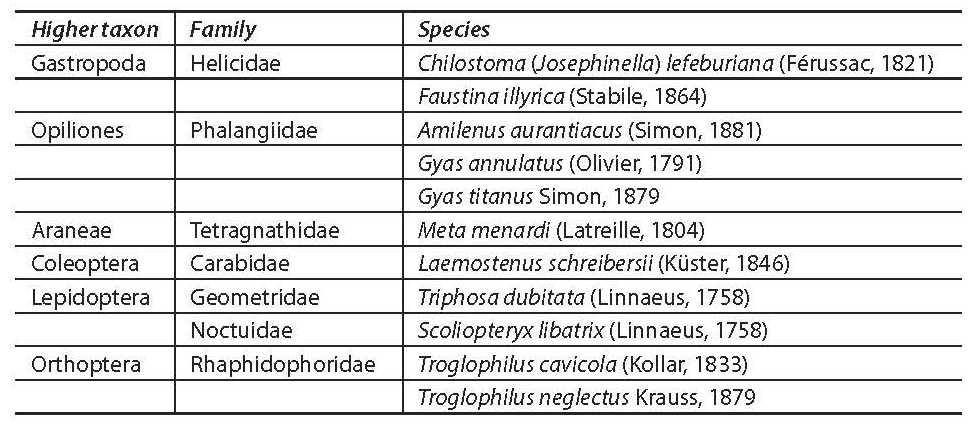Contribution of non-troglobiotic terrestrial invertebrates to carbon input in hypogean habitats
DOI:
https://doi.org/10.3986/ac.v42i2-3.669Keywords:
biomass, carbon flux, caves, non-troglobiotic species, organic carbon, respirationAbstract
Eleven of the most important terrestrial invertebrate species in Slovenian caves were analyzed for differences in their fresh and dry biomass, energy content and carbon bulk during winter. These data were combined with the species abundance in 54 caves and adits in order to estimate their organic carbon bulk and carbon input into these habitats. In Central European caves, Troglophilus cavicola, T. neglectus, Faustina illyrica, Amilenus aurantiacus and Scoliopteryx libatrix are the most important vectors of carbon between the epigean and hypogean habitats. In contrast to the general assumption, carbon total contribution to caves via dead bodies is only 0.15% of total migratory biomass, and it is not directly available to troglobionts because of infection with entomopathogenic fungi. In winter, together with predated migratory specimens, carbon input does not exceed 0.3% of the total migratory biomass. This situation should be carefully examined in every karstic region inhabited by distinctive fauna.
Keywords: biomass, carbon flux, caves, non-troglobiotic species, organic carbon, respiration.
Downloads

Downloads
Published
How to Cite
Issue
Section
License
Authors guarantee that the work is their own original creation and does not infringe any statutory or common-law copyright or any proprietary right of any third party. In case of claims by third parties, authors commit their self to defend the interests of the publisher, and shall cover any potential costs.
More in: Submission chapter




